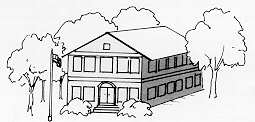 |
The Valley schools are in the floodplain of the Rio Grande. Before 1930, most of this land was in various stages of riparian, woodland, and aquatic natural communities. Levees, a system of drain canals, and the North and South Diversion Channels have reduced the threat of flood from the river and arroyos.
Increasing urbanization of the area has reduced the number of farms and the amount of irrigated acreage. Farms which remain are used to grow alfalfa and to pasture dairy cattle.
Most of the area is disturbed, and vegetation growing in vacant lots and fields consists primarily of herbs and grasses. A number of common weeds such as pig weed, lamb's quarters, milkweed, cocklebur, and goat head are found. Grasses such as sand drop seed and alkali sacaton are also common. Elms grow in readily disturbed areas, and salt cedar and willow can be found along irrigation and drain canals.
Disturbance of the Valley area has significantly reduced the presence and diversity of wildlife. Those species which are found are adapted to agricultural and urban land use. Migrating birds occasionally pass through the urban area and can be seen in the trees. Some spill over from adjacent riparian woodland animals also occurs. Urban areas are dominated by typical, civilization-adapted birds such as house sparrows, starlings, house finches, and pigeons. A large flock of crows winters in the valley, roosting in riparian woodlands and feeding in irrigated fields and urban sections. Robins and grackles are also common. Many of these birds, as well as house mice, Norway rats, and pocket gophers (the dominant mammals), are considered pests when their populations become large. Wood house's toads are still common, and garter snakes are occasionally found. Mosquitos, which breed in the stagnant and sometimes flowing water, occasionally are vectors for encephalitis.
(Up to Section IV, Back to A West Mesa School, On to A Heights School)